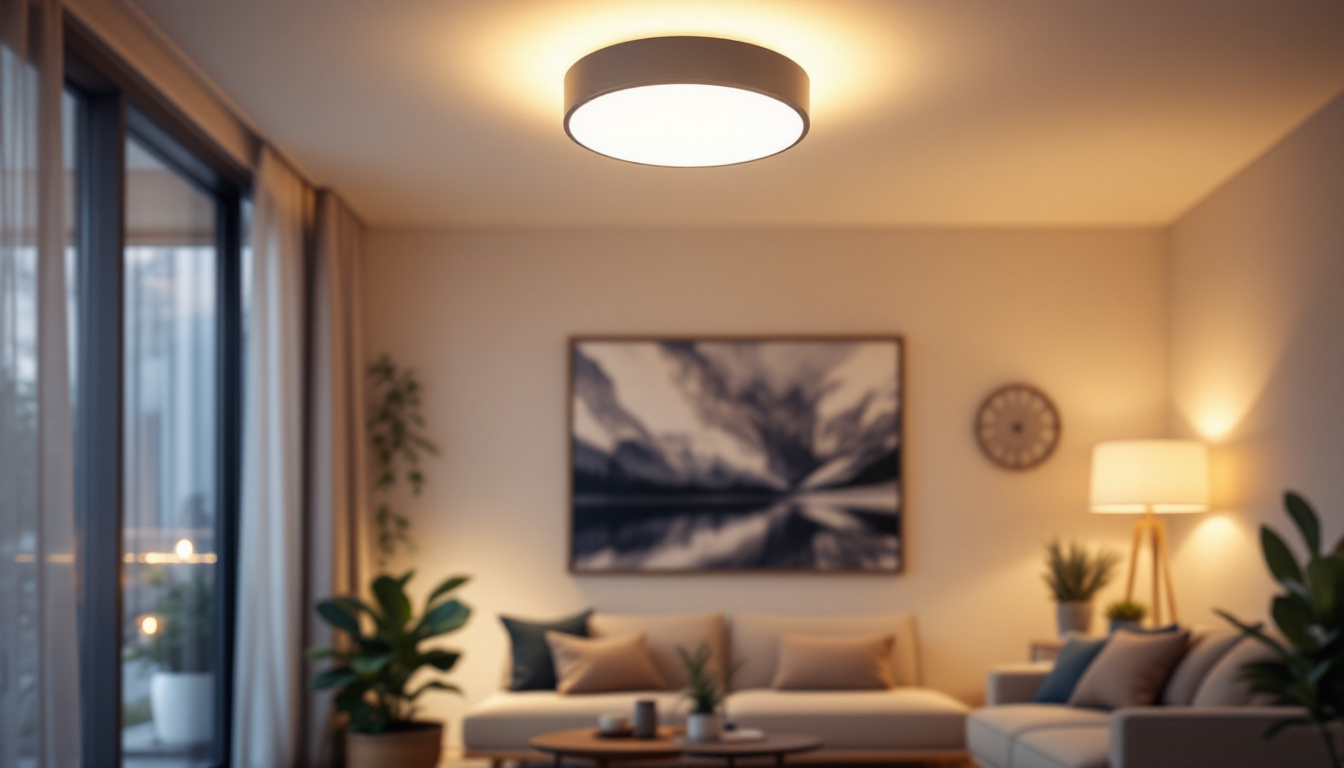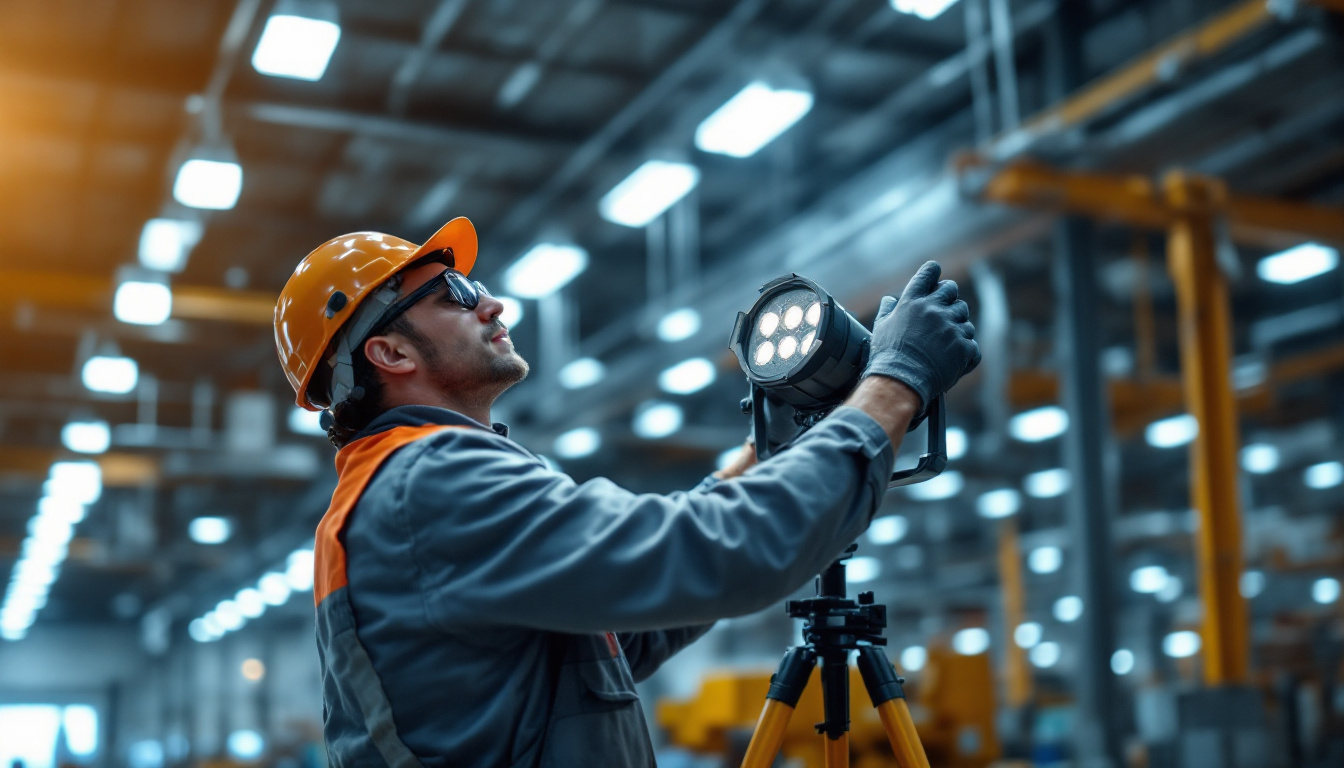

In the evolving landscape of warehouse management, efficient lighting solutions play a pivotal role in enhancing productivity and safety. LED lighting has emerged as a frontrunner in this domain, offering numerous advantages over traditional lighting systems. As warehouses increasingly adopt LED technology, understanding how to future-proof these lighting projects becomes essential for contractors.
Future-proofing involves selecting solutions that not only meet current needs but also anticipate future requirements and advancements. This article explores various strategies and considerations for implementing LED lighting solutions in warehouses, ensuring longevity and adaptability.
One of the key benefits of LED lighting in warehouses is its energy efficiency. Unlike conventional fluorescent or incandescent bulbs, LEDs consume significantly less power while providing the same, if not better, illumination. This reduction in energy consumption translates to lower utility bills, which can be a substantial cost saving for warehouse operators. Moreover, the longevity of LED lights—often lasting up to 25,000 hours or more—means less frequent replacements, further reducing maintenance costs and downtime associated with changing bulbs.
Additionally, LED lighting can be integrated with advanced control systems, such as motion sensors and smart lighting technologies. These systems can automatically adjust the brightness based on occupancy or natural light levels, optimizing energy use and enhancing the working environment. For example, in areas of the warehouse that are less frequently accessed, lights can dim or turn off entirely when no movement is detected. This adaptability not only contributes to energy savings but also aligns with sustainability goals, making warehouses more environmentally friendly and compliant with increasingly stringent regulations on energy use and emissions.
LED lighting offers a multitude of benefits that make it an ideal choice for warehouse environments. These advantages extend beyond mere energy efficiency, impacting operational costs, safety, and overall workflow.
One of the most significant advantages of LED lighting is its energy efficiency. LEDs consume considerably less power than traditional incandescent or fluorescent bulbs, leading to substantial reductions in energy bills. This efficiency translates into lower operational costs, which is crucial for warehouses that operate on tight margins.
Moreover, the longevity of LED lights—often lasting up to 25,000 hours or more—means reduced maintenance costs. Fewer replacements lead to savings not only in the cost of the bulbs but also in labor associated with changing lights, making LEDs a financially sound investment. The reduced heat output of LEDs also contributes to energy savings by minimizing the load on cooling systems, further enhancing overall cost efficiency in large warehouse spaces.
Proper lighting is vital in warehouse settings where visibility can directly impact safety. LED lights provide bright, consistent illumination, reducing shadows and dark spots that can lead to accidents. Enhanced visibility is particularly important in high-traffic areas where forklifts and personnel operate simultaneously.
Additionally, the ability to customize LED lighting systems—such as adjusting brightness levels and color temperatures—allows for tailored solutions that meet specific operational needs. This adaptability further enhances safety and efficiency within the workspace. For instance, cooler color temperatures can improve alertness and focus among workers during early morning or late-night shifts, while warmer tones can create a more comfortable environment during daytime operations. Furthermore, integrating motion sensors with LED systems can ensure that lights are only on when needed, which not only conserves energy but also extends the lifespan of the lighting fixtures.
When planning an LED lighting project for a warehouse, several key considerations can help ensure the system remains effective and relevant for years to come.
As warehouse operations evolve, the lighting system should be able to adapt to changing needs. Scalability is a crucial factor to consider when selecting LED lighting solutions. Opting for modular systems allows for easy expansion or reconfiguration as the warehouse layout changes or as new technologies emerge.
Flexibility in design also plays a significant role. Lighting solutions that can be easily adjusted or reprogrammed to accommodate different tasks or workflows will provide long-term value. For instance, integrating smart lighting controls can enable dynamic adjustments based on occupancy or natural light levels, further enhancing efficiency.
The rise of smart technology in warehouse management presents an opportunity to enhance LED lighting systems. Integrating lighting with Internet of Things (IoT) solutions can lead to improved energy management and operational efficiency. Smart sensors can monitor light levels and adjust accordingly, ensuring optimal illumination while minimizing energy consumption.
Furthermore, data collected from smart lighting systems can provide valuable insights into warehouse operations. This information can inform decisions about layout changes, equipment usage, and even employee productivity, allowing for continuous improvement in warehouse management.
Staying compliant with local and national regulations is crucial when implementing LED lighting solutions. Many regions have specific standards regarding energy efficiency, safety, and environmental impact. Ensuring that the chosen lighting systems meet these standards not only avoids potential fines but also enhances the reputation of the contractor.
Regularly reviewing and updating knowledge of regulations can help contractors recommend the best solutions to their clients, ensuring that projects are not only compliant but also forward-thinking.
A well-designed lighting layout is essential for maximizing the benefits of LED technology in a warehouse setting. Several factors should be considered to create an effective design.
Each warehouse has unique operational needs and layouts that influence lighting requirements. Understanding the flow of goods, the types of equipment used, and the specific tasks performed in different areas is vital for designing an effective lighting system.
For instance, areas with high shelving may require different lighting considerations than packing zones. Conducting a thorough assessment of the space and its operations will provide valuable insights that inform the lighting design.
Selecting the appropriate fixtures is critical for achieving optimal lighting levels. LED high bay lights are commonly used in warehouses due to their ability to provide bright illumination over large areas. However, the placement of these fixtures can significantly impact their effectiveness.
Strategically positioning lights to minimize shadows and ensure even distribution of light is essential. Utilizing lighting design software can aid in visualizing the layout and making informed decisions about fixture types and placements.
While LED lighting systems are known for their longevity and low maintenance requirements, regular upkeep is still necessary to ensure optimal performance. Establishing a maintenance plan can help prolong the life of the lighting system and maintain efficiency.
Conducting regular inspections of the lighting system is essential for identifying any issues before they escalate. This includes checking for burnt-out bulbs, ensuring that fixtures are securely mounted, and assessing the overall condition of the system.
Cleaning fixtures periodically is also important, as dust and debris can accumulate and diminish light output. A simple cleaning regimen can significantly enhance the performance and lifespan of LED lights.
As technology continues to advance, there may be opportunities to upgrade existing LED lighting systems to incorporate new features or improve efficiency. Staying informed about the latest developments in lighting technology can help contractors recommend timely upgrades to their clients.
For instance, retrofitting existing fixtures with new smart technology can enhance functionality without the need for a complete system overhaul. This approach not only saves costs but also maximizes the return on investment for clients.
Examining real-world examples of successful LED lighting implementations can provide valuable insights and inspiration for future projects. These case studies highlight the benefits of LED lighting in warehouse environments and demonstrate effective strategies for future-proofing.
A large distribution center transitioned from traditional fluorescent lighting to an LED system, resulting in a 60% reduction in energy consumption. The project involved a comprehensive assessment of the facility’s layout and operations, leading to a customized lighting design that improved visibility and safety.
The integration of smart controls allowed for dynamic adjustments based on occupancy, further enhancing energy savings. The facility not only achieved significant cost reductions but also improved employee morale and productivity due to better lighting conditions.
An e-commerce fulfillment center faced challenges with inconsistent lighting levels and high energy costs. By implementing an LED lighting solution with a focus on flexibility and scalability, the center was able to adapt to changing operational needs.
The use of high bay LED fixtures combined with smart sensors allowed for tailored lighting solutions that adjusted to different workflows throughout the day. The result was a more efficient operation, with a notable reduction in energy expenses and improved safety for employees.
As the logistics and warehousing industry continues to evolve, the importance of efficient and adaptable lighting solutions cannot be overstated. LED lighting stands out as a sustainable and effective choice, offering numerous benefits that align with modern operational needs.
By focusing on scalability, integration with smart technologies, and adherence to regulations, contractors can future-proof their lighting projects, ensuring they remain relevant and effective for years to come. With careful planning, design, and maintenance, LED lighting can transform warehouse environments, enhancing productivity, safety, and overall operational efficiency.
Ready to elevate your warehouse lighting and stay ahead of the curve? At LumenWholesale, we provide contractors with the finest spec-grade LED lighting solutions at unparalleled wholesale prices. Our commitment to quality and affordability ensures that you can implement future-proof lighting projects that enhance productivity and safety, without the burden of inflated costs. Embrace the ease of bulk purchasing with the added benefit of free shipping, and discover how our extensive selection can meet and exceed your project’s demands. Transform your warehouse lighting today by visiting Wholesale Lighting at the Best Value and take the first step towards a brighter, more efficient future.

Discover why LED strip lights are revolutionizing the lighting industry and what every contractor needs to know to stay ahead.

Explore the fascinating history and modern resurgence of gas lighting in this insightful article tailored for lighting contractors.

Discover the essential insights lighting contractors need to master flush mount light installations.

Discover expert tips and insights on selecting and installing LED factory lights tailored for lighting contractors.
Get notified when NEW deals are released.
Optimize your budget with wholesale discounts.
Only top-quality, specification-grade lighting products.
No additional costs at checkout - what you see is what you pay.
We understand the unique needs of contractors.